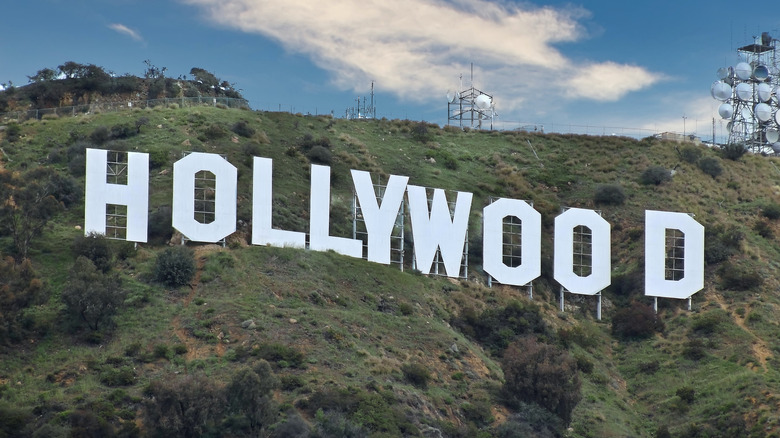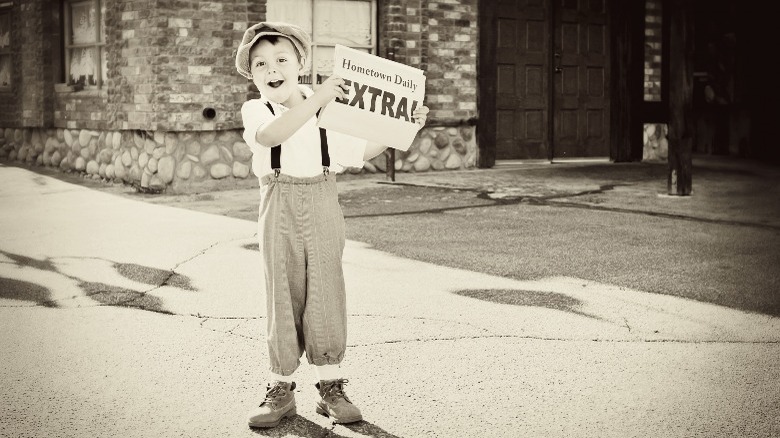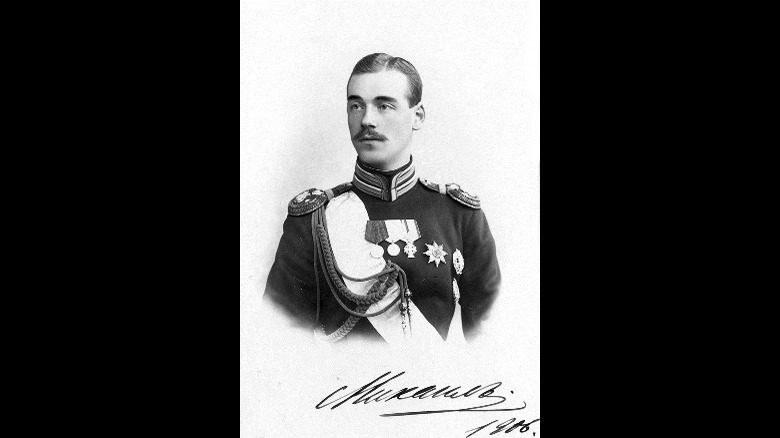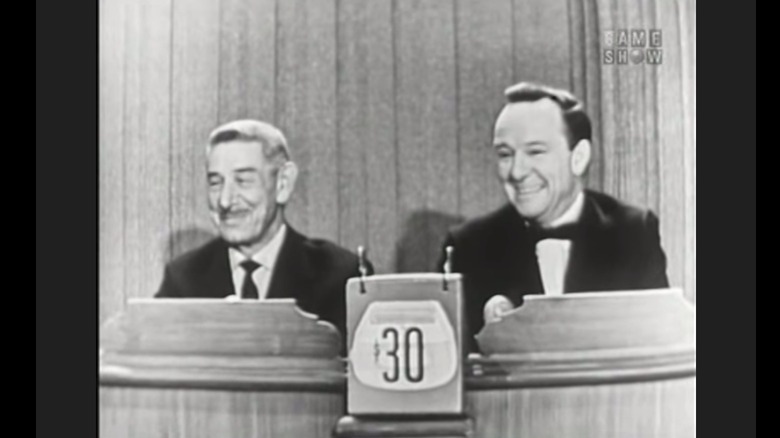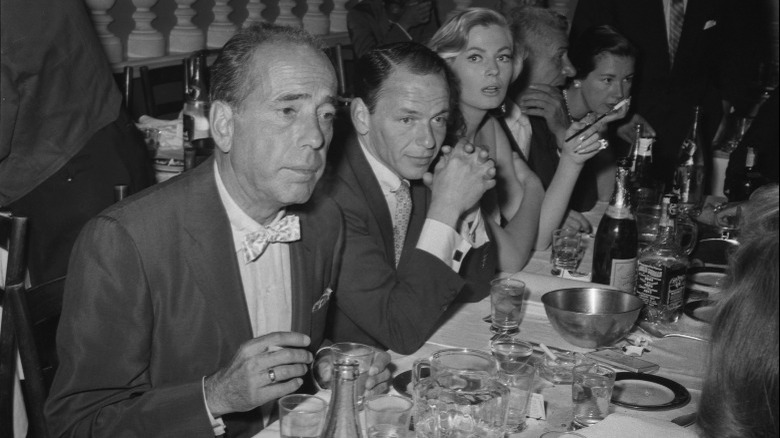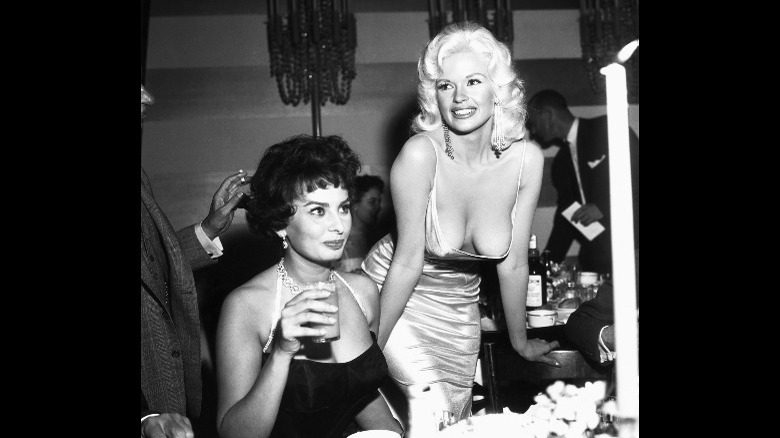The Hollywood Restaurateur Who Passed Himself Off As A Russian Prince
Scotland Yard probably described him best: Michael Romanoff was "a rogue of uncertain origin."
In the 1940s and 1950s, he owned one of Hollywood's most famous and popular restaurants: Romanoffs (no apostrophe). Major celebrities of the period ate there. He claimed to be a Russian prince, a member of the fallen Romanov dynasty. Modeling himself on a real person, he said his full name was Michael Dimitri Alexandrovich Obolensky-Romanoff and that he was a nephew of the last czar, Nicholas II (via Time). He looked the part: According to the Los Angeles Times, he always wore a three-piece suit, carried a gold-tipped walking stick, and had short hair and a "pencil-thin mustache." The New York Times noted that his aristocratic bearing and aplomb allowed him to claim American birth and a Russian title at the same time. Few people questioned him.
He became a favorite with elites on both coasts, and even being called out as an impostor by an actual Russian didn't hurt his popularity.
His likely true origins
American immigration authorities had their eyes on Michael Romanoff because he was in the U.S. illegally. They managed to discover his probable, real background. According to the Los Angeles Times, Romanoff was probably born around 1890 in Lithuania, then a part of the Russian Empire. His birth name was Hershel Geguzin, which he later anglicized to Harry F. Gerguson. He likely came to the U.S. around 1900, and depending on the source, he was either with his parents or with a cousin (via The New York Times). The Los Angeles Times states that his father died before his birth, that he was the youngest of six children, and that his mother sent him to the U.S. because she was worried about his safety.
In the U.S., he ended up in several orphanages but ran away from each one. He supported himself by doing odd jobs like selling newspapers and being a bellhop. Eventually, he was able to put himself through a private high school but ended up doing menial work afterward. He worked on a cattle ship and ended up in England, where he picked up a posh English accent. He was arrested and jailed during World War I for impersonating an aristocrat and throwing a huge party he couldn't afford. After getting out of prison, he lived in Paris for a while. There, he met several Russians, which gave him the idea for his new identity (via the Los Angeles Times).
The real Prince Michael
Though Michael Romanoff claimed to be Nicholas II's nephew, the real prince, or grand duke, Michael Alexandrovich, was actually the czar's younger brother. He was about 12 years older than his impersonator.
According to The Alexander Palace, he was known for his scandalous marriage to Natalia Wulfert, of whom his family strongly disapproved because she wasn't an aristocrat. He wasn't disinherited, however, because he was second in line for the throne. When Nicholas II was forced to abdicate in 1917, he bypassed his young son to name Alexandrovich his heir. Alexandrovich deferred to the will of the people and never actually ruled. As they did with his brother, the Bolsheviks ordered Alexandrovich to the Ural Mountains in 1918, and he was murdered there along with his secretary by a group of revolutionaries on June 11 (per The Alexander Palace).
Michael Romanoff, the impostor, was called out at a Hollywood dinner party by a former Russian major general, Theodor Lodijensky of the Imperial Guard. He had known the real Prince Michael, who, he pointed out, had died years earlier. Per the Los Angeles Times, he noted with derision that this Michael "can't even speak Russian."
Romanoff's immigration woes
No matter his true identity, Michael Romanoff (above left) was in the U.S. illegally and was reportedly deported 10 times. In December 1932, The New York Times detailed his latest arrest for illegally entering the U.S. He had been deported earlier that year on the same charge and spent time in a Paris prison before being kicked out of France. In late 1932, he apparently stowed away on a ship coming into New York City and immediately escaped to Canada before returning to New York a few weeks later.
He was caught because he couldn't do without his favorite pipe tobacco, something immigration services knew about him. They warned the manager of the store where he usually bought tobacco to keep an eye out for him. The manager was an admirer of Romanoff's and reported him reluctantly to the police when he showed up at the store. Romanoff was apparently unconcerned, telling the press he could prove his American citizenship and would be released within days. He was taken to Ellis Island after his arrest. The New York Times didn't report the outcome of the case, but Romanoff was back in the U.S. by 1939, when he opened his famous Hollywood restaurant. He became a U.S. citizen by an act of Congress in 1958 (via The New York Times).
His restaurants
Though Michael Romanoff was a celebrity before he became a restaurateur, he's now best known for his eateries. Bad service at Dave Chasen's famous Hollywood restaurant gave him the idea to open his own (via the Los Angeles Times). He received backing from stars like Charlie Chaplin, James Cagney, and Humphrey Bogart (pictured with Frank Sinatra at Romanoffs). Romanoff leased a building at 326 N. Rodeo Drive, movie studios supplied wallpaper and decor, and the Brown Derby restaurant lent him serving dishes.
Romanoff said that the secret to the success of his restaurant was his French chef, but celebrity patronage certainly didn't hurt. Bogart ordered the same lunch there every day: two Scotch and sodas, an omelet, French toast, milk, and afterward, coffee and brandy. Romanoff himself also ate there every day with his two English bulldogs, Socrates and Confucius. He eventually moved to another, bigger location on S. Rodeo Drive and opened restaurants in San Francisco and Palm Springs as well. They were less successful because he was rarely there. His Beverly Hills restaurant floundered after Bogart's death in 1957, with Romanoff visiting that location less frequently as well, and it ultimately closed in 1962. Times were changing, and Romanoff said (via the Los Angeles Times), "There is no longer room for an elegant restaurant of this kind."
Hollywood elite at Romanoffs
In its heyday, the Los Angeles Times says, Romanoffs was a place "to see and be seen." It was important to get one of the most prominently-placed booths; if you couldn't and had to sit at the bar, it meant your fame was fading, according to The Desert Sun.
Fans flocked to the restaurant to see their favorite celebrities, and some memorable moments occurred there between those celebrities. The famous picture of Sophia Loren's shock at Jayne Mansfield's cleavage was taken at Romanoffs. William Randolph Hearst Jr. got into a fight outside Romanoffs with his father's former lover's new husband. Myrna Loy and her ex-husband celebrated their divorce there, and gossip columnists Louella Parsons and Hedda Hopper made peace there after a long feud. Other famous patrons included J. Edgar Hoover, Gregory Peck, Lucille Ball, Desi Arnaz, Errol Flynn, and Cole Porter (via the Los Angeles Times and The Desert Sun).
At the center of it all was the enigmatic Romanoff. Because of his fame, he cameoed in a dozen movies and performed on Broadway. The spotlight was always important to the man Life Magazine called "the most wonderful liar."
